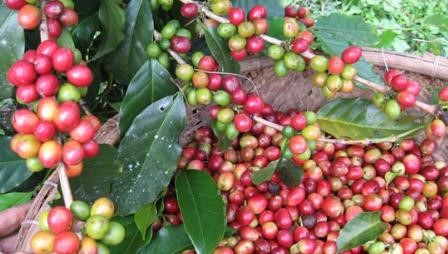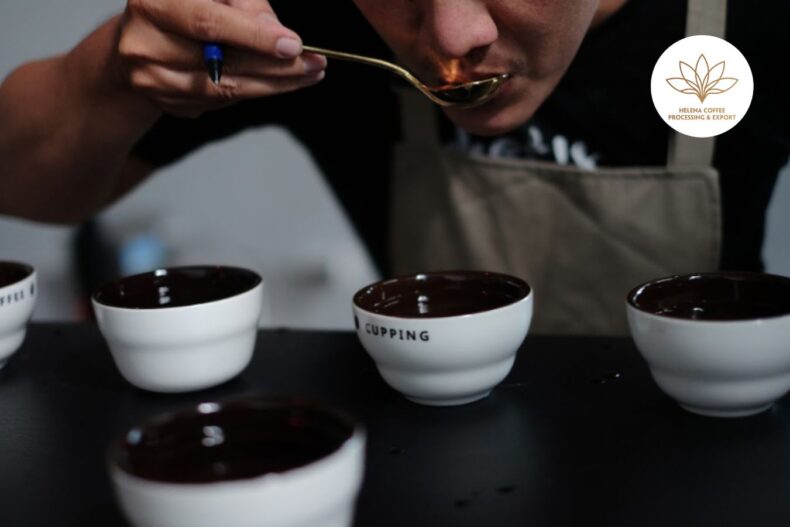
Catuai coffee – Origin & Biological Characteristics | Coffee market in Vietnam – Helena., JSC: Catuai coffee variety results from crossbreeding between Mundo Novo and dwarf Caturra varieties, made by the Sao Paulo Agricultural Research Institute – Brazil.
Catuai coffee plants have a higher yield than Bourbon because of their relatively small size, allowing high densities on the same cultivated area, but are very susceptible to rust disease due to genetic inheritance from Caturra.

Description of the Catuai coffee plant tradition
Catuai coffee variety results from crossbreeding between Mundo Novo and dwarf Caturra varieties, performed by the Agricultural Research Institute (Instituto Agronomico – IAC) of Sao Paulo – Brazil.
The Catuai coffee variety was created in 1949 from the cross between the yellow Caturra (Bourbon mutant) C476-11 and the Mundo Novo (Typica x Bourbon hybrid) CP 374-19 known as H. -2077 – Catuai coffee was officially first cultivated in Brazil in 1972 through pedigree selection and is still cultivated to this day (according to World Coffee Research ).

The Catuai coffee tree is highly productive compared to Bourbon, partly due to its relatively small tree size, which allows for high coverage on the same cultivated area (it can be planted at almost twice the density compared to Mundo Novo varieties. ).
Besides, the Catuai coffee tree is relatively low (due to inheriting the dwarf gene from the Caturra variety ), so it is relatively easy to apply the care, leprosy, and disease treatment. However, the disadvantage of Catuai, also inherited from Catutta, is that it is very susceptible to rust.
Meaning of the name Catuai
Catuai comes from the Latin word ” guarani multo mom, “which means “very good.” Catuai coffee is cultivated in many different countries, mainly in Latin America, with yellow and red fruit variations due to high yield efficiency. But this variety is not appreciated for the quality of coffee beans.
Distribution of Catuai coffee trees today
Catuai was first tested in Honduras in 1979 by the National Research Institute (IHCAFE). It was then commercialized in 1983 after IHCAFE selected two lines (IHC-313/UFV-2237-336 and IHC-311/UFV-2170-25) for planting. In Honduras today, the Catui coffee tree accounts for almost half of the Arabica varieties cultivated. Researchers at IHCAFE are actively pursuing breeding with Catuai, creating hybrids between Catuai and Timor Hybrid.
In addition to Honduras, Catuai coffee trees are also economically significant in Costa Rica, of which the Golden Catuai variety (H-02.05.2077) was introduced in 1985, and the sub-varieties (H-02.12.2077) have spread. Across this country. In Central America, Catuai coffee is not very popular; aside from being present in Guatemala in 1970, about 20% of Guatemala’s production is now Catuai.
>>> Catuai coffee – Origin & Biological Characteristics | Coffee market in Vietnam – Helena., JSC: Red Catuai coffee tree in Brazil.
Reference source:
- https://varieties.worldcoffeeresearch.org/


